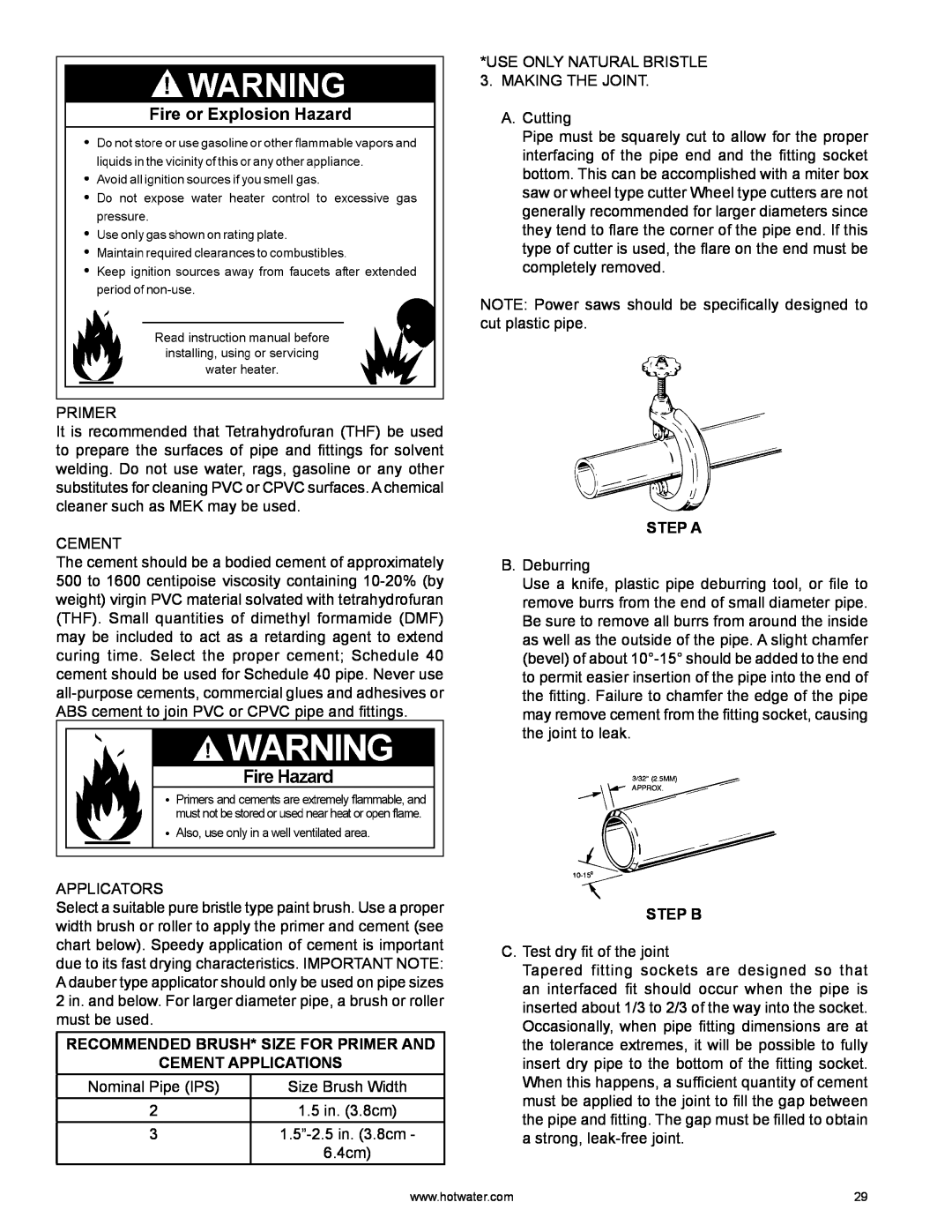
PRIMER
It is recommended that Tetrahydrofuran (THF) be used to prepare the surfaces of pipe and fittings for solvent welding. Do not use water, rags, gasoline or any other substitutes for cleaning PVC or CPVC surfaces. A chemical cleaner such as MEK may be used.
CEMENT
The cement should be a bodied cement of approximately 500 to 1600 centipoise viscosity containing
APPLICATORS
Select a suitable pure bristle type paint brush. Use a proper width brush or roller to apply the primer and cement (see chart below). Speedy application of cement is important due to its fast drying characteristics. IMPORTANT NOTE: A dauber type applicator should only be used on pipe sizes 2 in. and below. For larger diameter pipe, a brush or roller must be used.
RECOMMENDED BRUSH* SIZE FOR PRIMER AND
CEMENT APPLICATIONS
Nominal Pipe (IPS) | Size Brush Width |
2 | 1.5 in. (3.8cm) |
3 | |
| 6.4cm) |
*USE ONLY NATURAL BRISTLE 3. MAKING THE JOINT.
A.Cutting
Pipe must be squarely cut to allow for the proper interfacing of the pipe end and the fitting socket bottom. This can be accomplished with a miter box saw or wheel type cutter Wheel type cutters are not generally recommended for larger diameters since they tend to flare the corner of the pipe end. If this type of cutter is used, the flare on the end must be completely removed.
NOTE: Power saws should be specifically designed to cut plastic pipe.
STEP A
B.Deburring
Use a knife, plastic pipe deburring tool, or file to remove burrs from the end of small diameter pipe. Be sure to remove all burrs from around the inside as well as the outside of the pipe. A slight chamfer (bevel) of about
STEP B
C.Test dry fit of the joint
Tapered fitting sockets are designed so that an interfaced fit should occur when the pipe is inserted about 1/3 to 2/3 of the way into the socket. Occasionally, when pipe fitting dimensions are at the tolerance extremes, it will be possible to fully insert dry pipe to the bottom of the fitting socket. When this happens, a sufficient quantity of cement must be applied to the joint to fill the gap between the pipe and fitting. The gap must be filled to obtain a strong,
www.hotwater.com | 29 |
